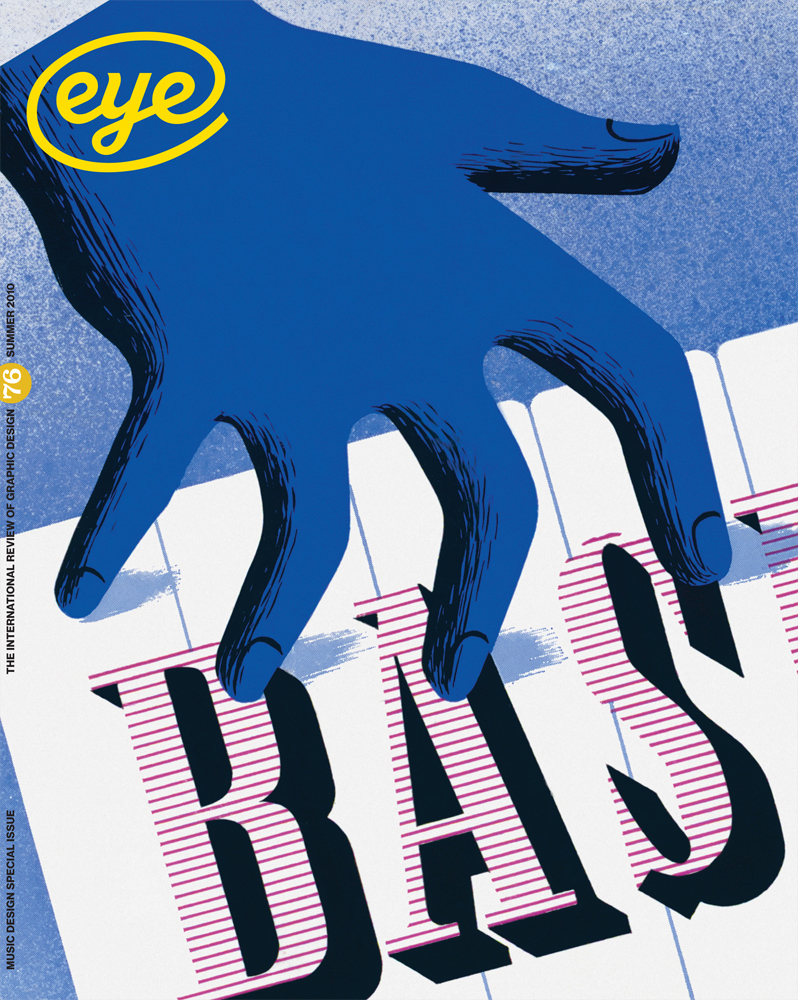Summer 2010
Design + music = magic
The scene creates the style, and sleeves tell us what their contents sound like, but what next?
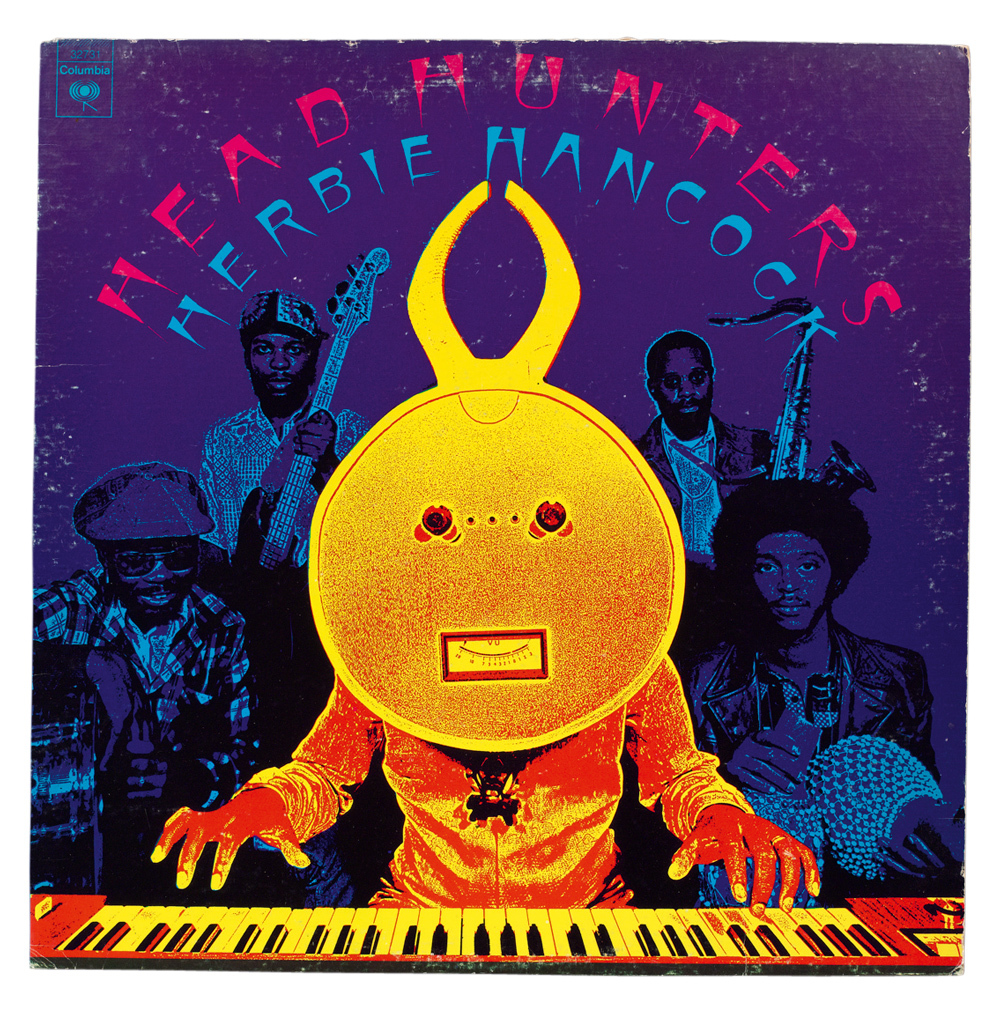
Something magical happens when we experience great music accompanied by great visual art, especially when both come out of a contemporary explosion of sub-cultural innovation. The best popular music packaging has always been created by just this kind of magic, the emotional charge you get when you pick up a twelve-inch single that not only promises a fantastic new listening experience but is already speaking in a strange new visual dialect, an irresistible invitation to explore.
Watching an emerging musical genre simultaneously create its own aesthetic is part of the fascination of popular music’s evolution. This is often a collective process, without individual authorship: the hip-hop graffiti style, the scrappily photocopied punk look and the Day-Glo hoodies of New Rave are examples where, although key individuals have played a role, the scene itself has created most of the aesthetic. When applied to a sleeve the power is self-evident: what the records look like tells you what they sound like.
Cover of Love you more by Buzzcocks, 1978. Design: Malcolm Garrett. Above.
Cover of Herbie Hancock’s Headhunters, 1973. Design: Victor Moscoso.
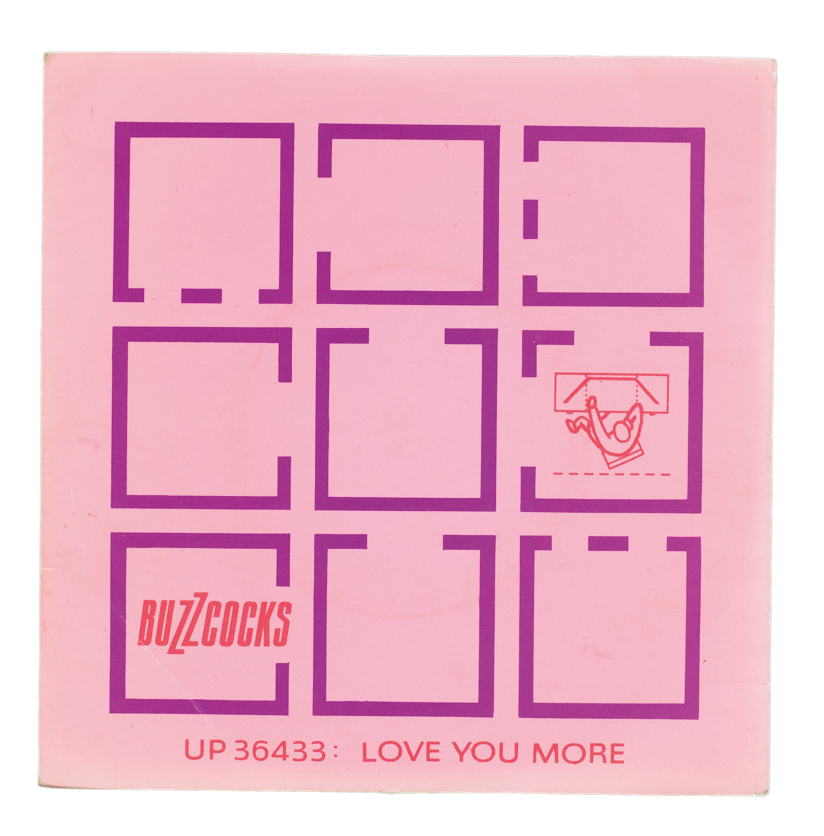
Traditional ‘product’ is going the way of the dinosaur. I buy vinyl and record it digitally, which means I can search for it by name and listen to it on my iPod or computer – functionality I cannot do without. Having played the record once, I file it away forever. Insane.
But I need an aesthetic engagement with the artists I love. If I’m buying music digitally I want some kind of ‘record sleeve’ equivalent. Frankly, a line of text and a postage-stamp-sized image derived from a redundant real-world product doesn’t cut it.
How will the next generation of designers and musicians create much needed innovation in experiencing and interacting with music online? How is this collaborative model going to play out once data-heavy content can be delivered instantaneously to your hardware of choice? Where’s the magic going to come from?
Cover of Trouser Jazz by Mr. Scruff, 2002. Design: Mr. Scruff.
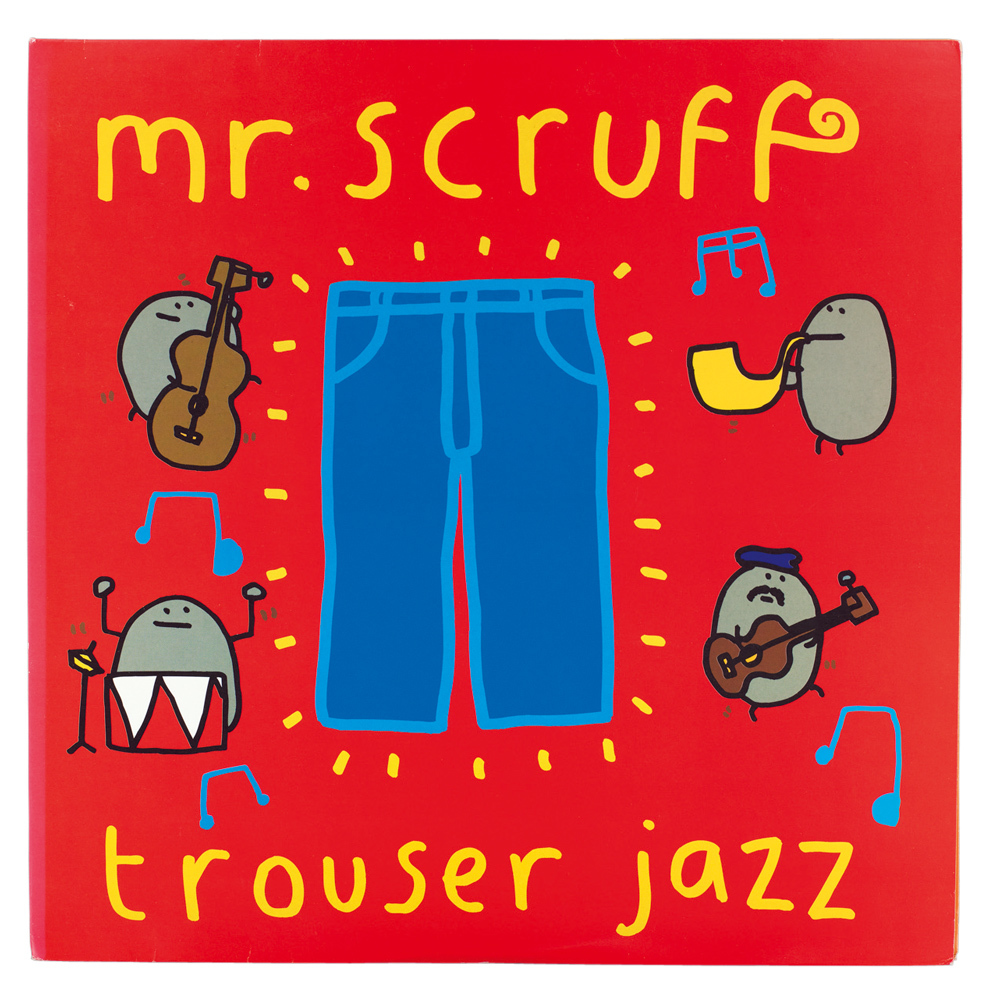
I’ve seen plenty of ‘interactive videos’ and generic visualisers but I’ve yet to experience the same level of excitement I get from videos or sleeves from any digital music packaging I’ve seen. The new iTunes ‘LP’ format could be a start. And at the time of writing, the prospect of Tom Hingston working with Flat Nose George’s extra interactive content for the Chemical Brothers’ new album Further (see p.24) is positively mouthwatering. However I’ve always felt that true innovation first emerges from the underground.
Perhaps we will have to wait until we (or the technology companies) finally settle on a standard for home hardware that truly integrates a Web connection with a screen-based entertainment device. Or maybe an iPad explosion will be the catalyst. In any case, it feels like a huge gap in the design landscape waiting to be filled and I can’t wait to (a) experience it and (b) explore it. See you in the future!
Cover of Hustler / Clik by Simian Mobile Disco, 2006.
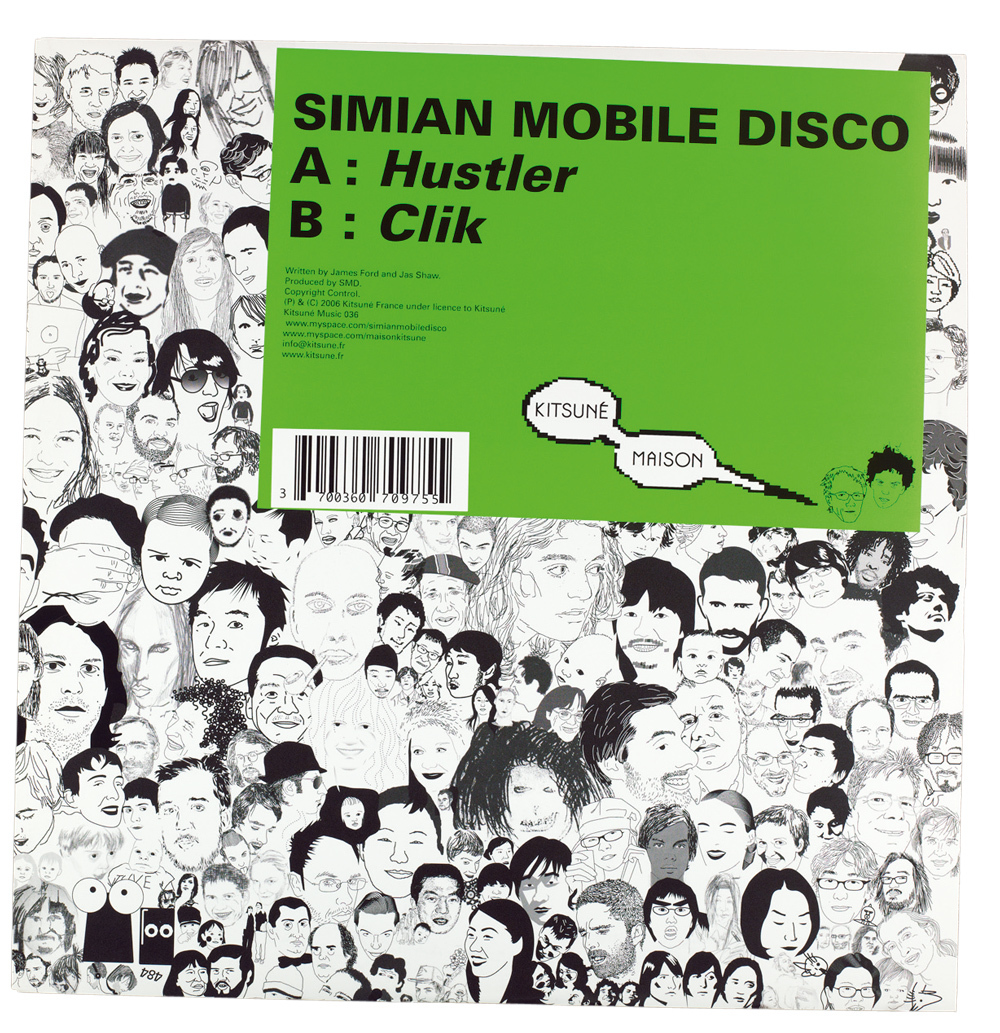
First published in Eye no. 76 vol. 19.
Eye is the world’s most beautiful and collectable graphic design journal, published quarterly for professional designers, students and anyone interested in critical, informed writing about graphic design and visual culture. It is available from all good design bookshops and online at the Eye shop, where you can buy subscriptions and single issues.

